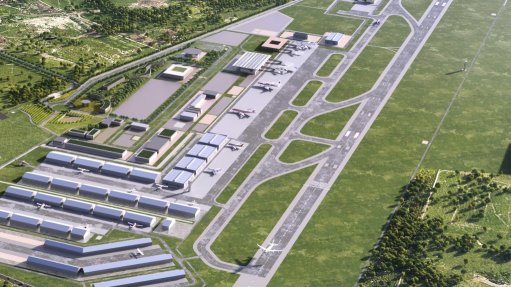Ongoing adaptation
It is positive that the current framework used by government to procure new generation capacity from independent power producers (IPPs) is under review.
These programmes have been struggling to deliver ever since they were restarted in 2019 following a long period of disruption, precipitated when, at the height of State capture, the then leadership of Eskom refused to contract with IPP projects that had been legally procured in 2014 on the false basis that the utility had sufficient capacity of its own.
When procurement eventually resumed, it was done largely on the basis on the 2011 reverse-auction framework, which was groundbreaking at the time and still regarded globally as best practice.
Nevertheless, conditions had changed.
Grid capacity was emerging as a constraint, placing pressure on the ‘first-come, first-served’ grid allocation system that had prevailed previously, and bringing to the fore philosophical and capacity gaps in Eskom’s ability to assess and process grid- access applications.
Despite much soul searching and capacity building, this remains a pinch point in the system that needs revision, particularly now that many projects are being developed on the basis of private power purchase agreements.
To its credit, Eskom has finalised a curtailment framework, the absence of which has left several wind projects in the Western, Eastern and Northern Cape provinces stranded when they could have been unlocked through some modest curtailment. Nevertheless, at the time of writing, the regulator had not yet approved the framework, leaving the grid underutilised in these regions.
That said, there are still real problems with the Interim Grid Capacity Allocation Rules, and it will be important that these are revised – even if again on an interim basis – if the next public procurement rounds are to succeed.
Then there is the unintended consequences flowing from the success of the most recent bid windows in dramatically reducing the price of wind and solar PV, the main one being the emergence of something of a tariff race to the bottom.
This came to the fore during the fifth renewables bid window when projects with razor-thin margins prevailed in becoming preferred bids.
These projects soon became unsustainable, however, on the back of the twin disruptions of the Covid lockdowns and Russia’s invasion of Ukraine, which resulted in a surge in the cost of key components. As a consequence, many projects failed to achieve financial close, resulting in both reputational and legal fallout, which continues.
Given that wind and solar PV are now the cheapest form of new electricity, perhaps there is now scope for some flexibility in the previous least-cost thinking and to begin allowing for premiums to support other policy objectives relating to local content, community upliftment and geographical diversification.
With the major market changes that will arise from the Electricity Regulation Amendment Act, public procurement of IPP capacity may not be a major factor in future.
While it is, however, there will be a need for ongoing review and adaptation to avoid failures.
Article Enquiry
Email Article
Save Article
Feedback
To advertise email advertising@creamermedia.co.za or click here
Comments
Press Office
Announcements
What's On
Subscribe to improve your user experience...
Option 1 (equivalent of R125 a month):
Receive a weekly copy of Creamer Media's Engineering News & Mining Weekly magazine
(print copy for those in South Africa and e-magazine for those outside of South Africa)
Receive daily email newsletters
Access to full search results
Access archive of magazine back copies
Access to Projects in Progress
Access to ONE Research Report of your choice in PDF format
Option 2 (equivalent of R375 a month):
All benefits from Option 1
PLUS
Access to Creamer Media's Research Channel Africa for ALL Research Reports, in PDF format, on various industrial and mining sectors
including Electricity; Water; Energy Transition; Hydrogen; Roads, Rail and Ports; Coal; Gold; Platinum; Battery Metals; etc.
Already a subscriber?
Forgotten your password?
Receive weekly copy of Creamer Media's Engineering News & Mining Weekly magazine (print copy for those in South Africa and e-magazine for those outside of South Africa)
➕
Recieve daily email newsletters
➕
Access to full search results
➕
Access archive of magazine back copies
➕
Access to Projects in Progress
➕
Access to ONE Research Report of your choice in PDF format
RESEARCH CHANNEL AFRICA
R4500 (equivalent of R375 a month)
SUBSCRIBEAll benefits from Option 1
➕
Access to Creamer Media's Research Channel Africa for ALL Research Reports on various industrial and mining sectors, in PDF format, including on:
Electricity
➕
Water
➕
Energy Transition
➕
Hydrogen
➕
Roads, Rail and Ports
➕
Coal
➕
Gold
➕
Platinum
➕
Battery Metals
➕
etc.
Receive all benefits from Option 1 or Option 2 delivered to numerous people at your company
➕
Multiple User names and Passwords for simultaneous log-ins
➕
Intranet integration access to all in your organisation





















